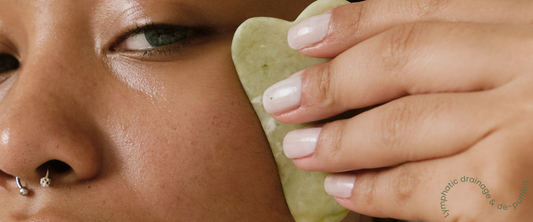Tension relief & smoothness – how relaxed facial muscles support a smoother-looking skin
Share
How facial tension affects your skin
Your face works hard every day - smiling, frowning, concentrating, reacting. These constant movements create muscle tension patterns that, over time, can contribute to fine lines, creases, and a tired-looking appearance.
At night, your skin shifts into repair mode, but if your muscles stay tense, your skin may crease in the same areas repeatedly, making those lines more noticeable over time. By supporting muscle relaxation, you can help maintain smoother-looking skin and a refreshed appearance.
What causes facial tension?
Facial tension isn’t just about stress. It builds up from everyday habits and unconscious movements. Here are a few key factors:
- Repetitive facial expressions – squinting, frowning, or pursing your lips all create tension patterns over time.
- Jaw clenching & stress – tension held in the jaw, forehead, and temples can make the face feel tight or stiff.
- Sleep position – pressing your face into a pillow for hours can lead to temporary sleep creases.
- Unconscious micro-movements – small habits like frowning while reading or tensing your forehead without realizing it can contribute to visible fine lines.
Understanding these patterns helps you take steps to support muscle relaxation and smoothness over time.
How to relax facial muscles & wake up with smoother-looking skin
Small changes in your nighttime routine can help release facial tension and encourage a more refreshed, rested look by morning.
1. Facial massage to release tension
A few minutes of gentle massage can help relieve muscle tightness and encourage a more sculpted, relaxed expression.
Tip: use light, circular motions around your forehead, temples, and jawline to help ease tension and soften facial expressions.
2. Unwinding before bed
Your body isn’t the only thing that needs to relax before sleep - your face does, too. Deep breathing, meditation, and gentle stretching can help lower stress levels, which can help reduce facial tension overnight.
Tip: do a quick tension check before bed. If you notice a clenched jaw or furrowed brows, try relaxing those areas before drifting off.
3. Adjusting your sleep position
If you sleep on your stomach or side, your skin presses against your pillow, leading to temporary sleep creases that can appear more noticeable over time.
Tip: sleeping on your back and using a silk or satin pillowcase can help minimize compression on the skin overnight.
4. Face taping – a gentle overnight solution
Face taping is a non-invasive technique that helps support facial relaxation overnight by gently holding the skin in place.
By slightly lifting the skin from the muscles beneath, face taping creates a small space in between that can help ease tension buildup and support a smoother-looking complexion by morning. Unlike massage, which requires active participation, face taping works passively while you sleep, making it an effortless addition to your routine.
Tip: always use a specially made kinesiology tape for the face with a gentle, skin-friendly adhesive to ensure comfort and prevent irritation.
The takeaway
Facial tension is a natural part of daily life, but small changes can help your skin appear smoother and more refreshed over time.
By incorporating mindful relaxation, adjusting sleep position, and gentle techniques like face taping and facial massage, you can help encourage a relaxed, well-rested look - without the need for invasive treatments.




